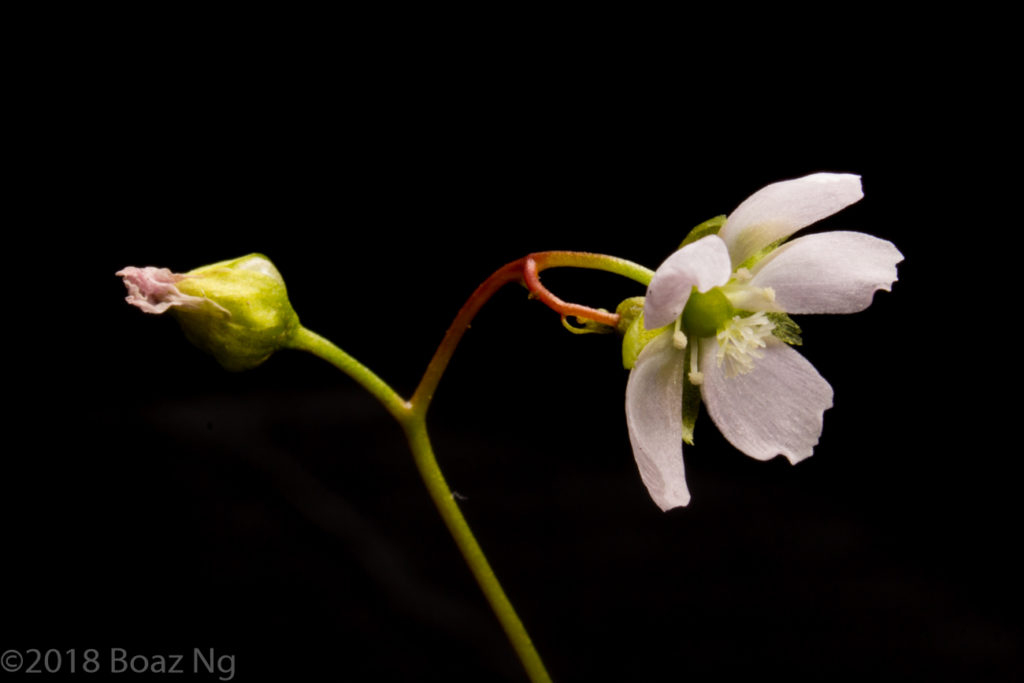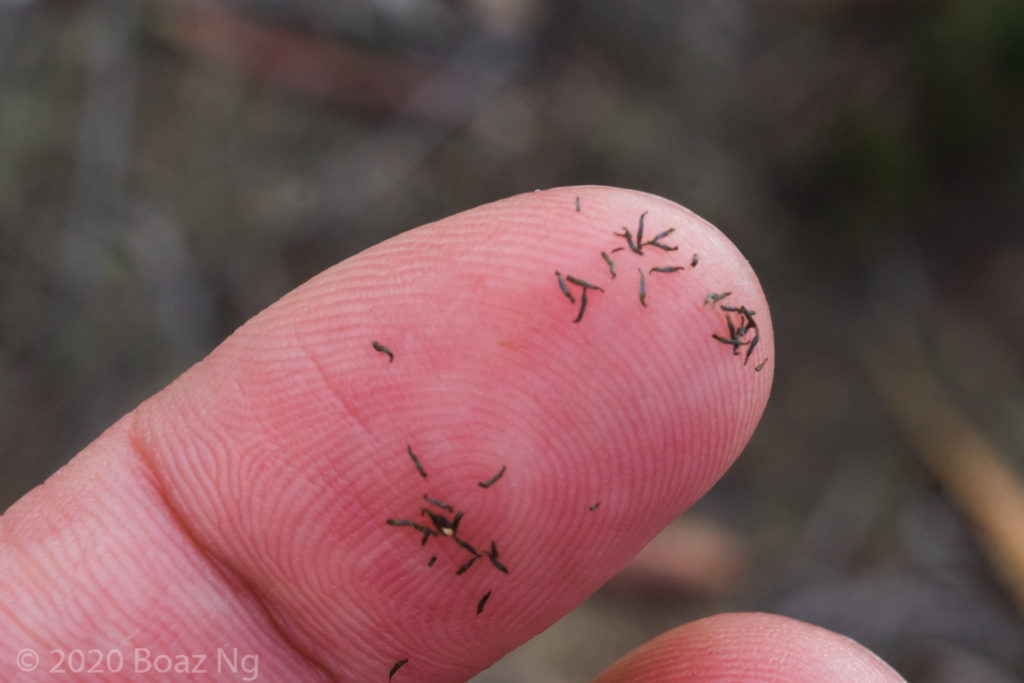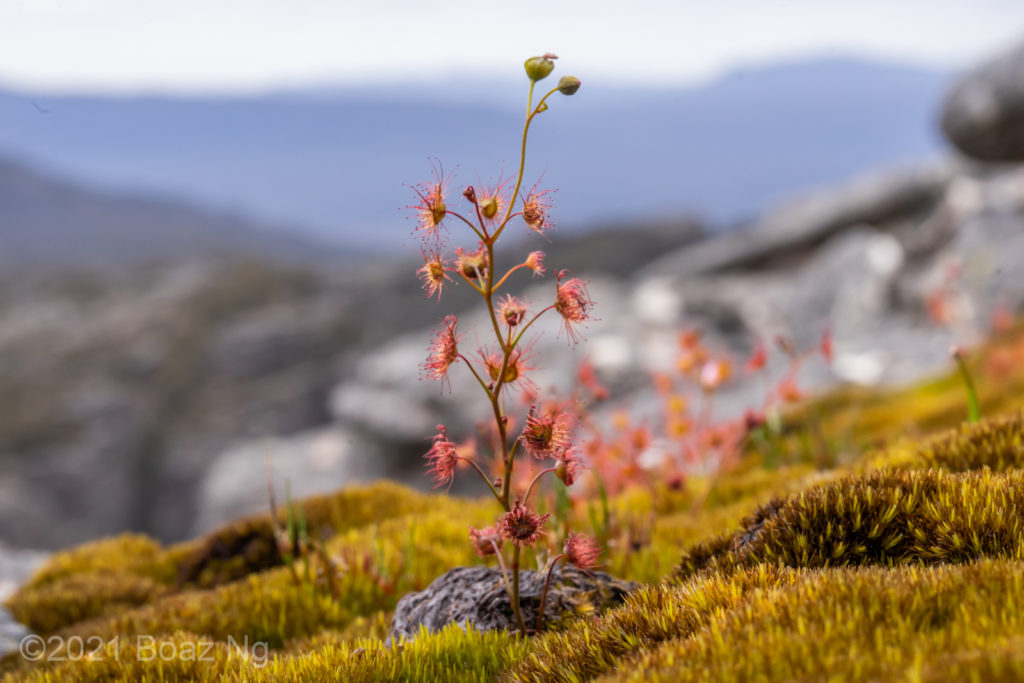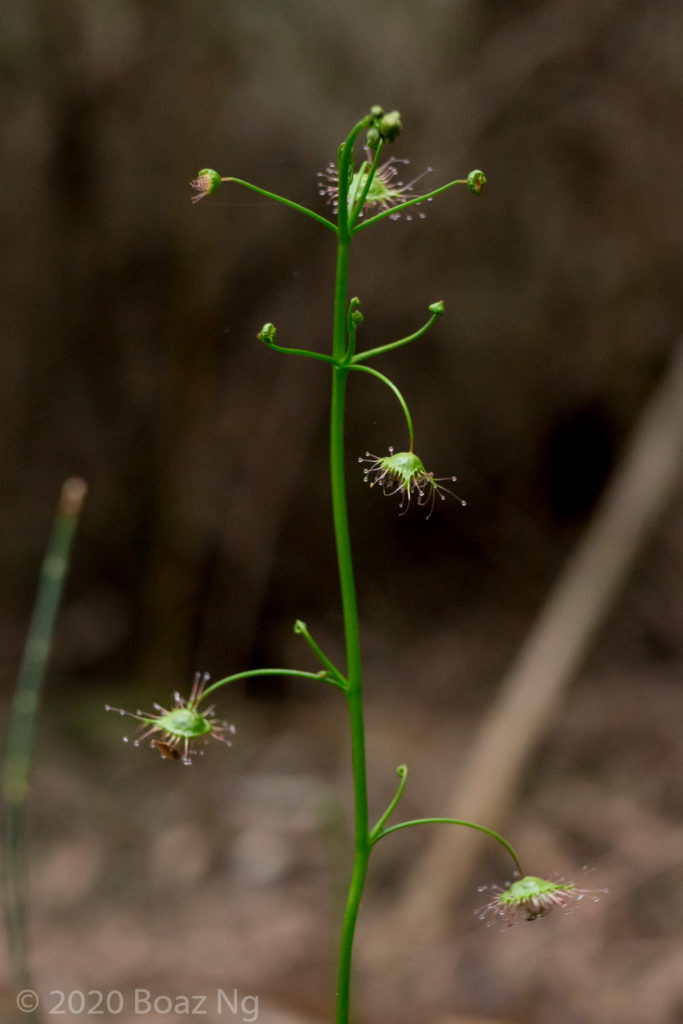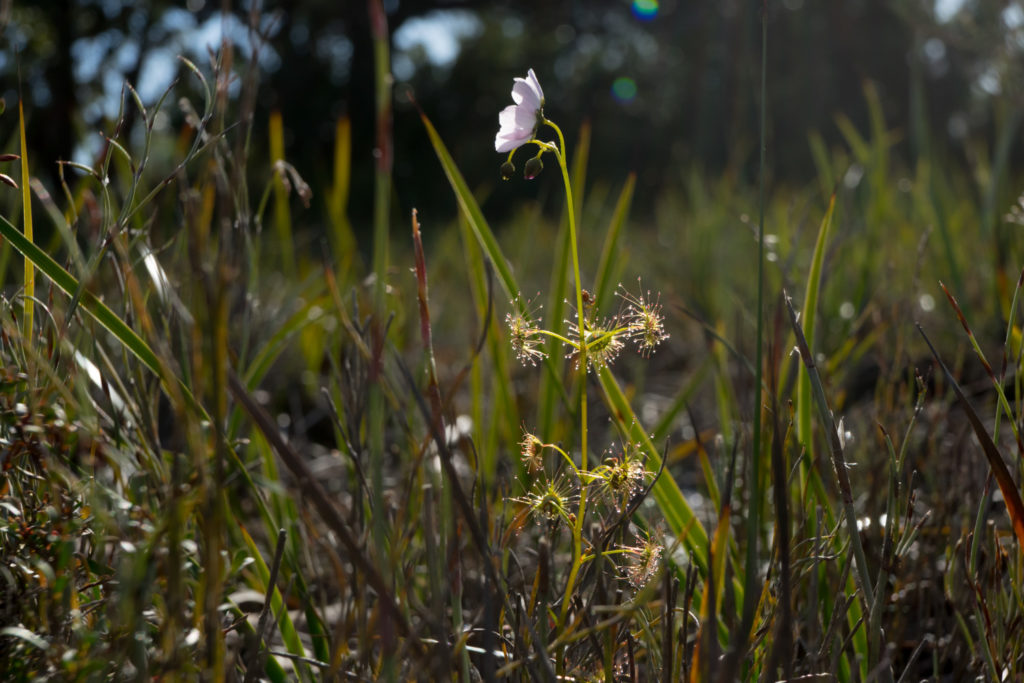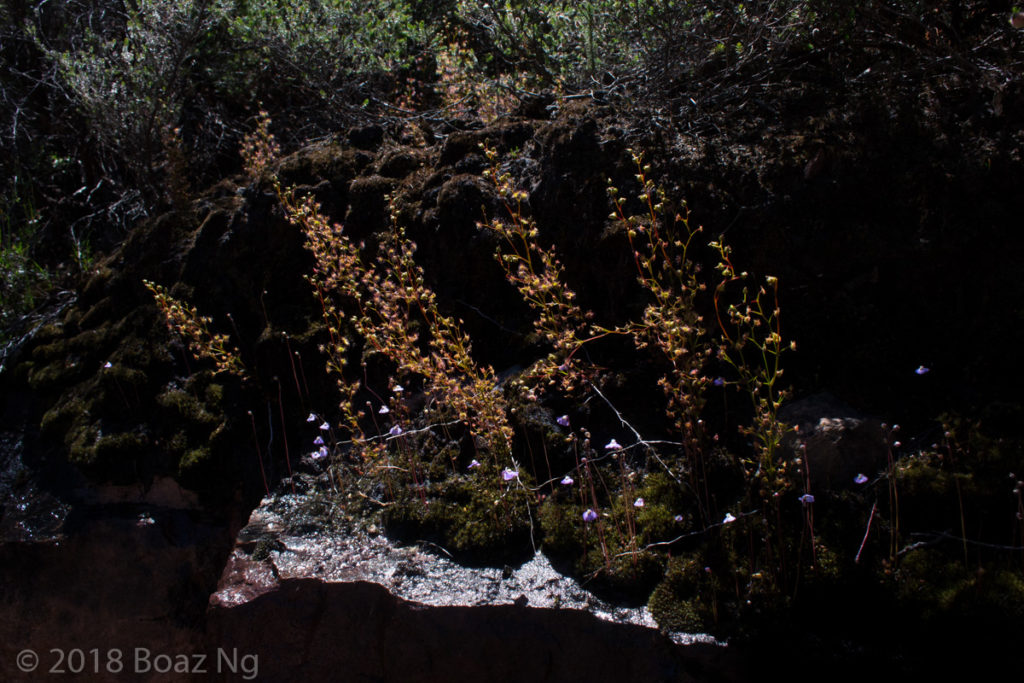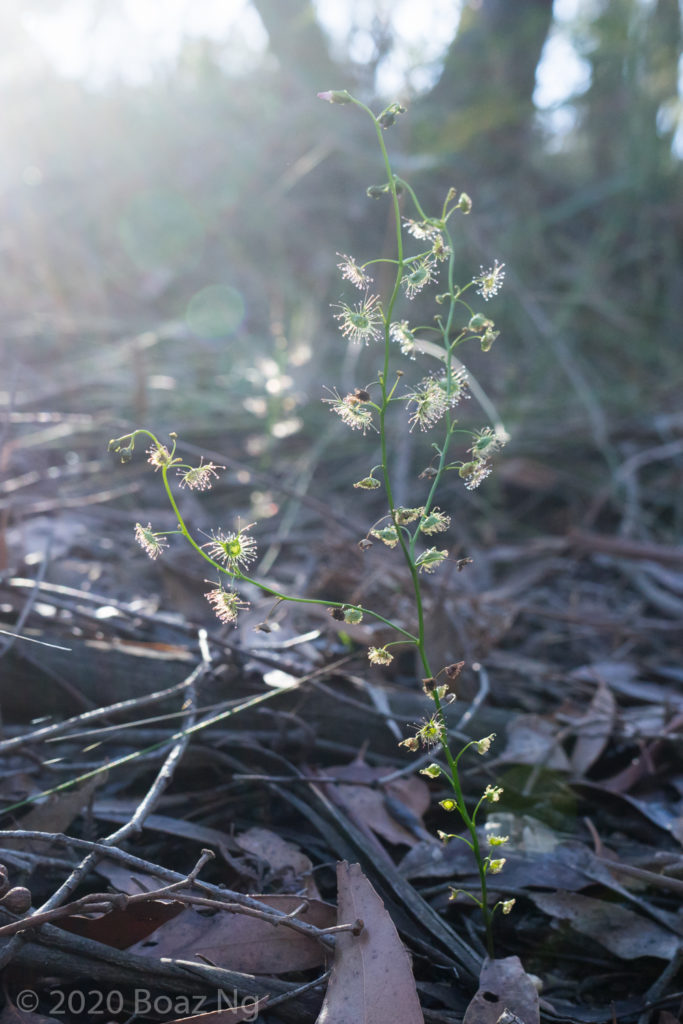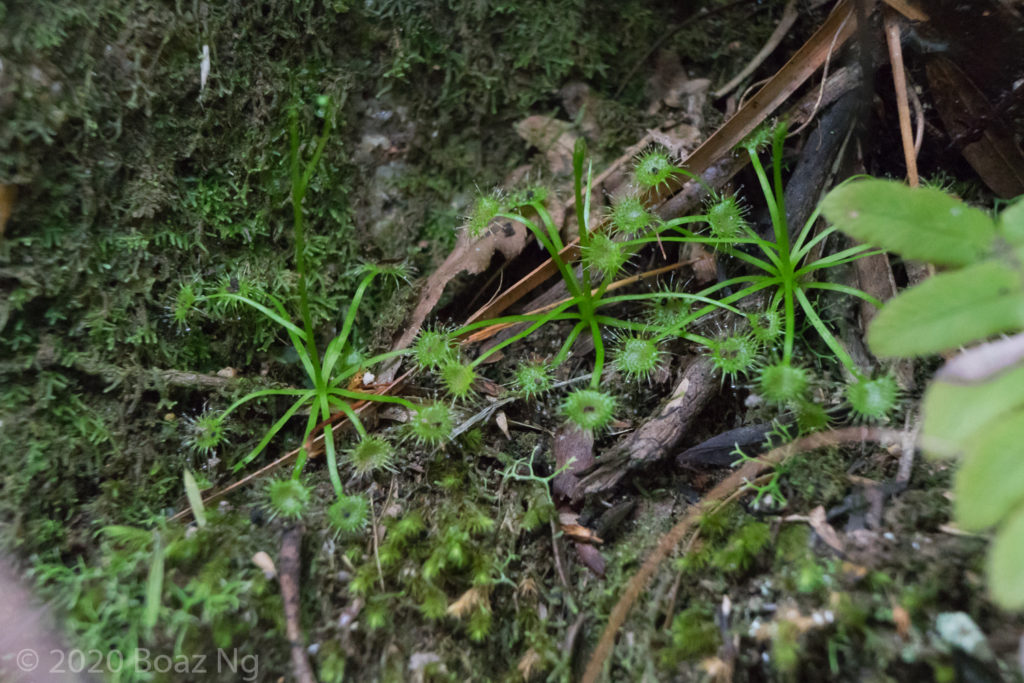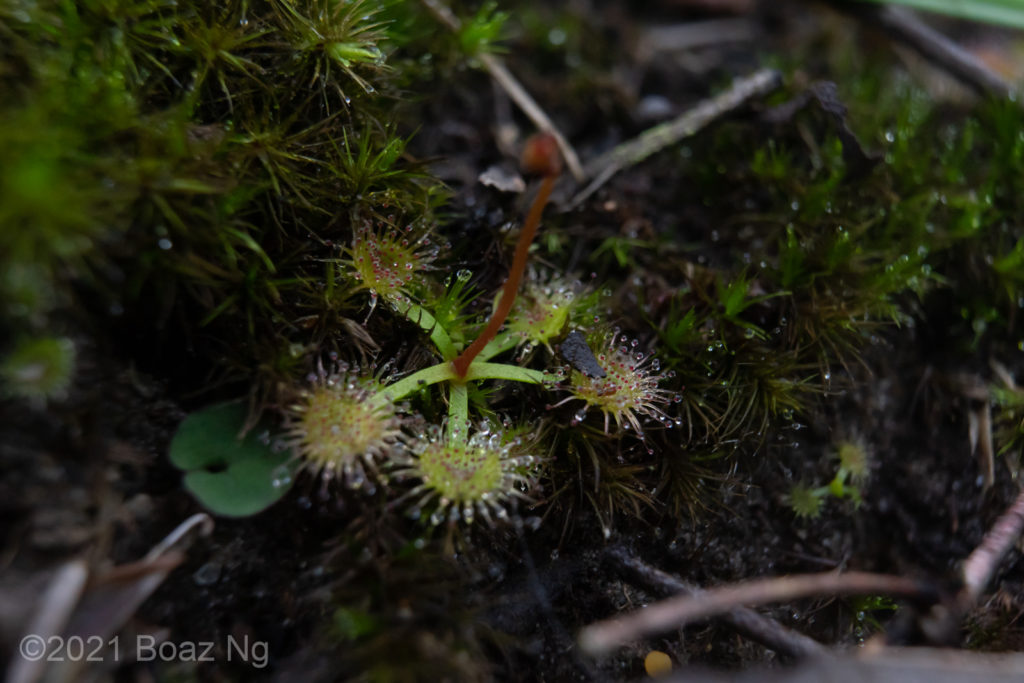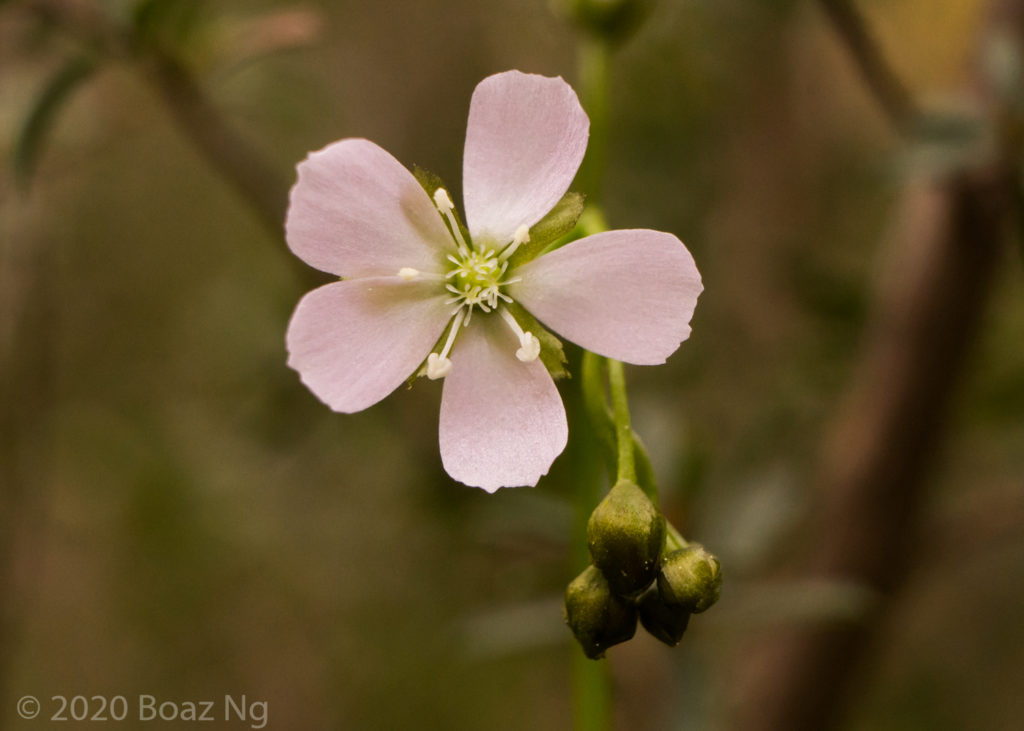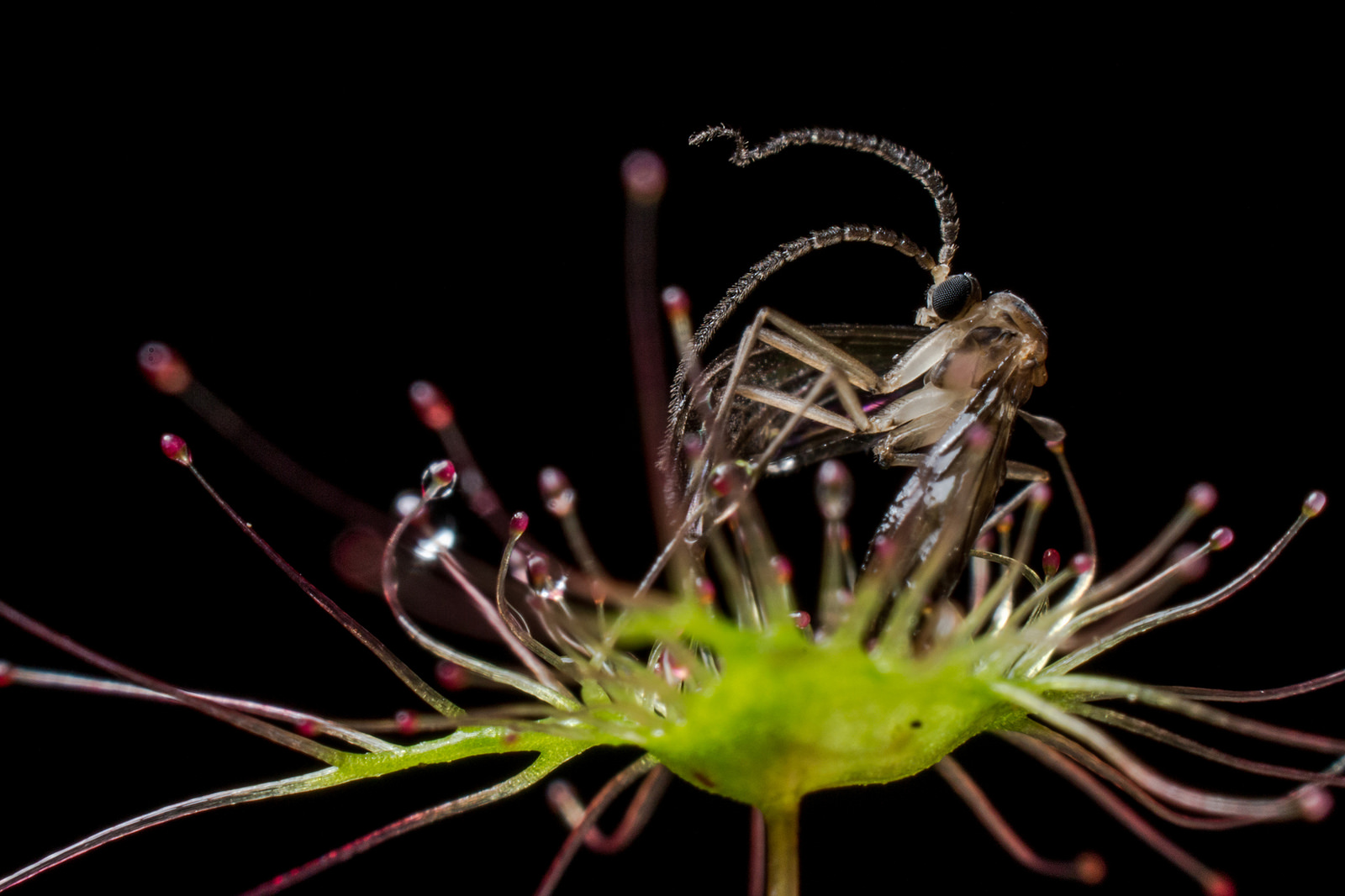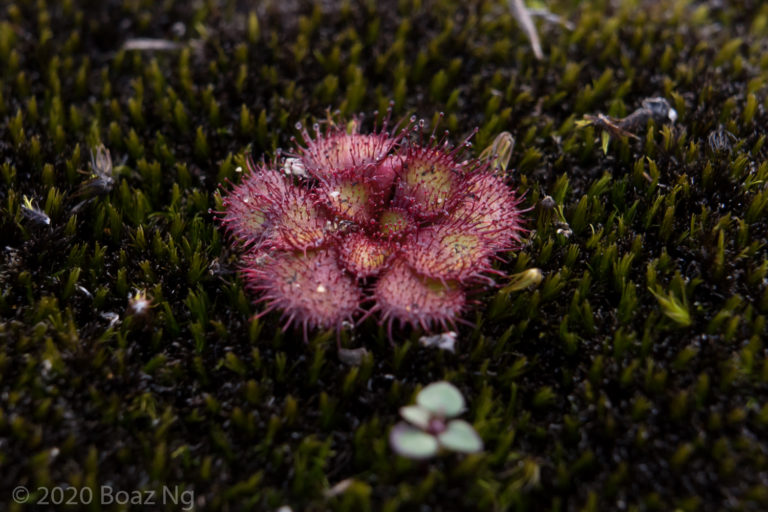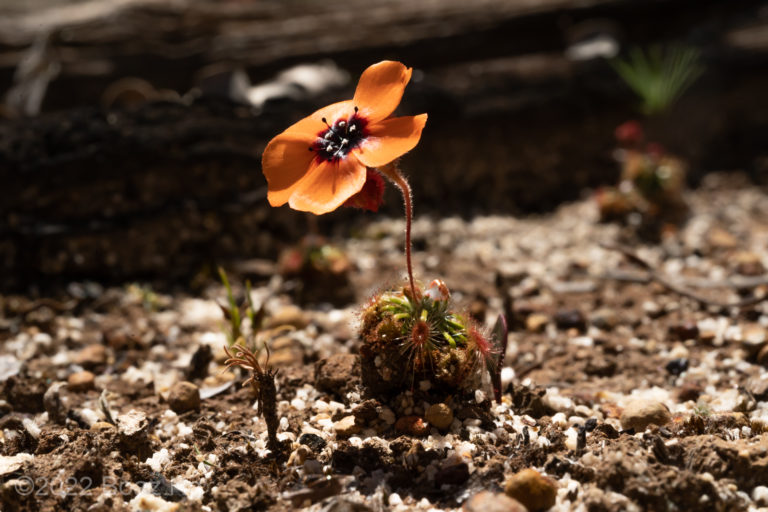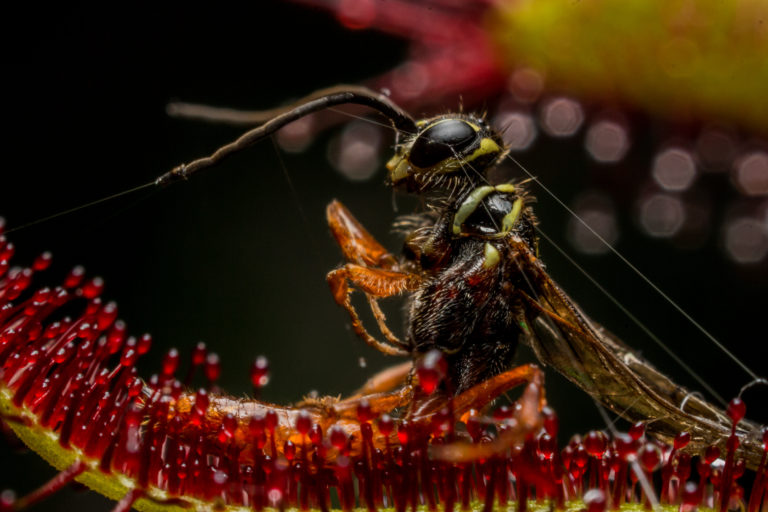Drosera auriculata is a winter growing tuberous species from eastern Australia.
Drosera auriculata is variable in morphology. It is usually green to olive in colour, depending on light exposure. The basal rosette can range from a well formed structure with fleshy leaves to a sparse rosette of wiry leaves. In many populations, flowering sized plants do not form a substantial basal rosette although this is inconsistent. The erect stem typically grows to about 20-30 cm in height, although larger plants can exceed 50 cm. In some populations, such as those in interior NSW and the forests of SE Victoria, the upper half of the stem can branch. Other localities are invariably unbranching. The petals are usually pink, sometimes white, and the styles are white. The sepals are glabrous. The seed shape is distinctively long and thin.
The species grows across SE Australia and the northern half of New Zealand. It grows in a wide range of habitats including eucalypt forests, heathlands and seepages.
Drosera auriculata is a member of the Drosera peltata complex, which all share similar morphologies. It is firstly distinguished from most its relatives firstly by its glabrous sepals (most other species have hairy sepals). Drosera auriculata shares its glabrous sepals with Drosera lunata. It is unambiguously distinguished by its long, thin seed (that of D. lunata is round). Drosera auriculata is usually green to olive whereas D. lunata is commonly golden to orange. The styles of D. auriculata are white whereas those of D. lunata are usually brown.
